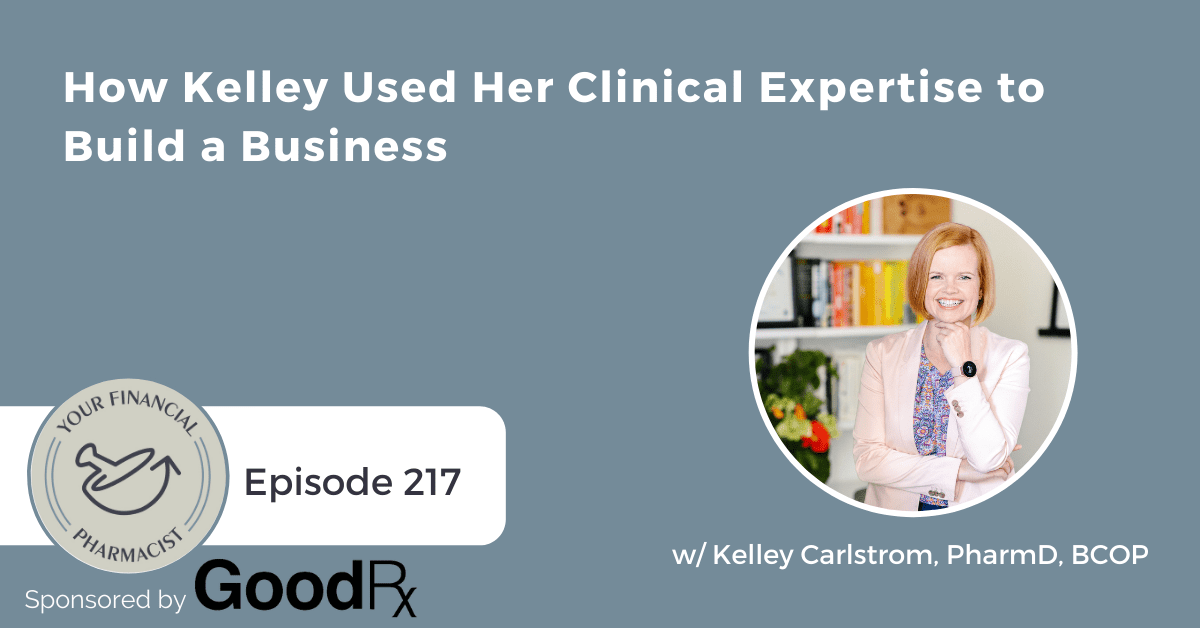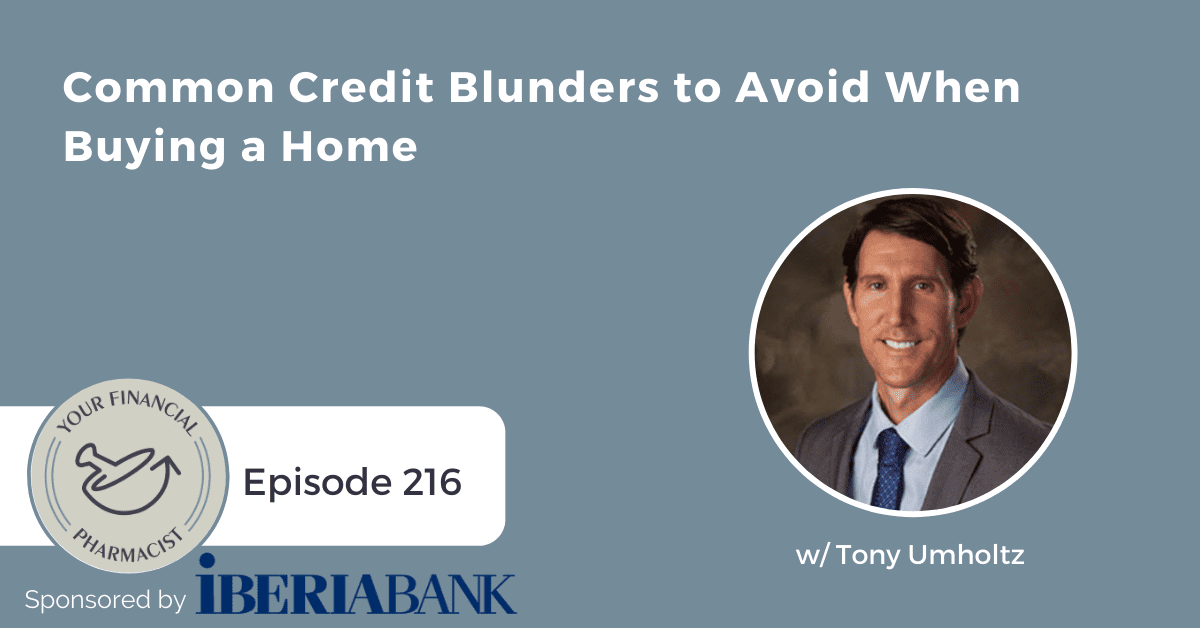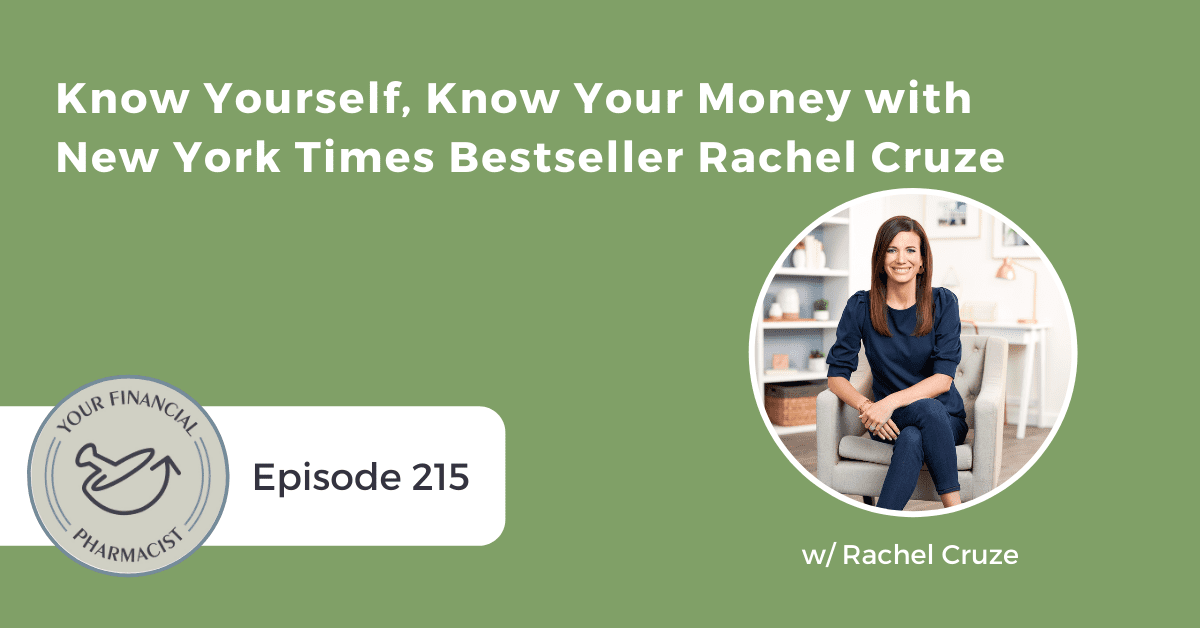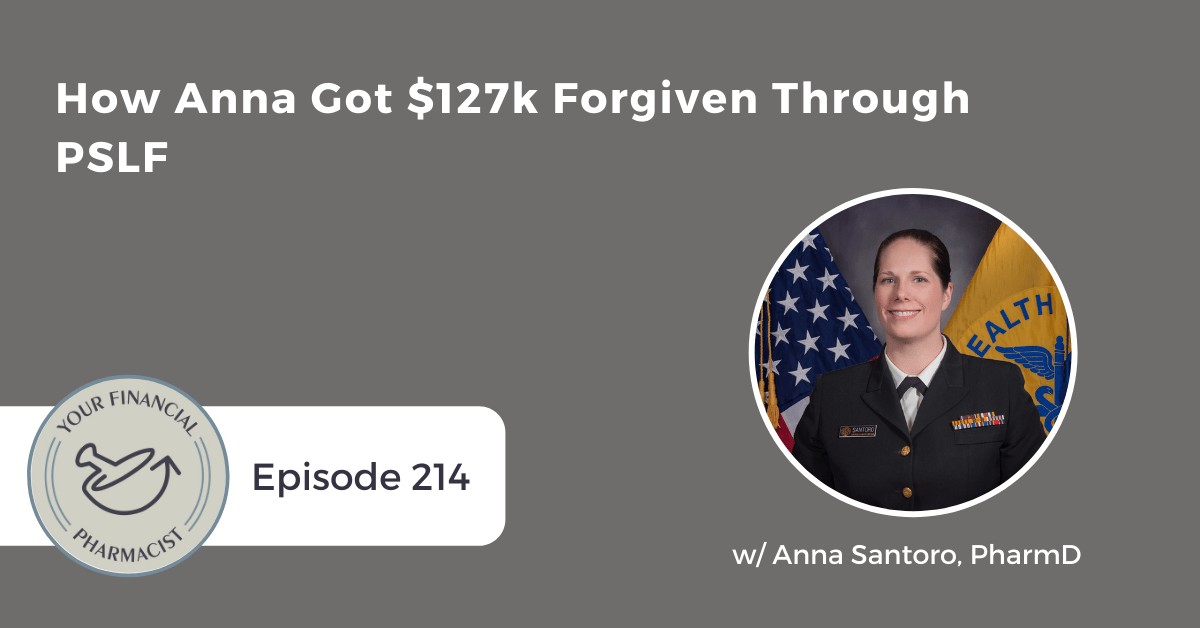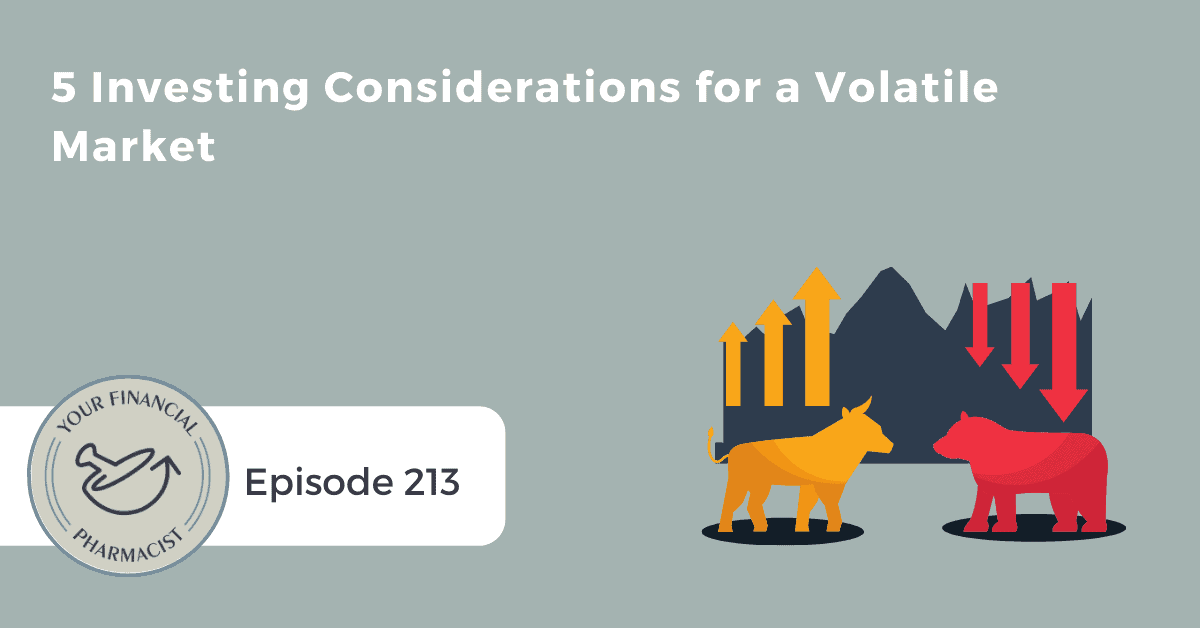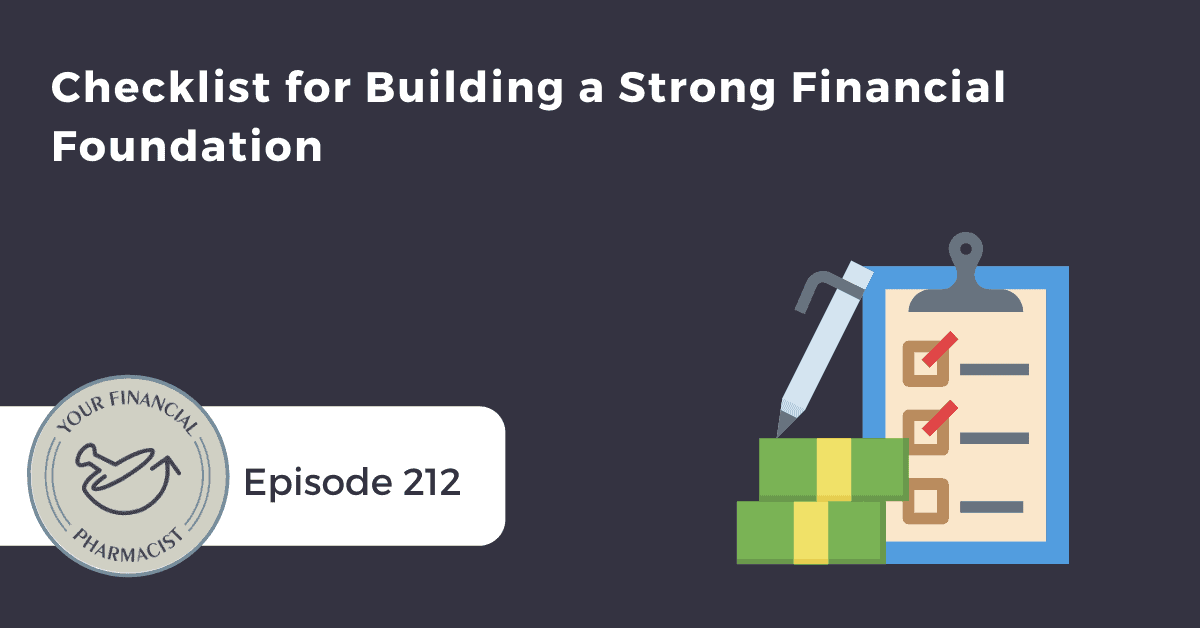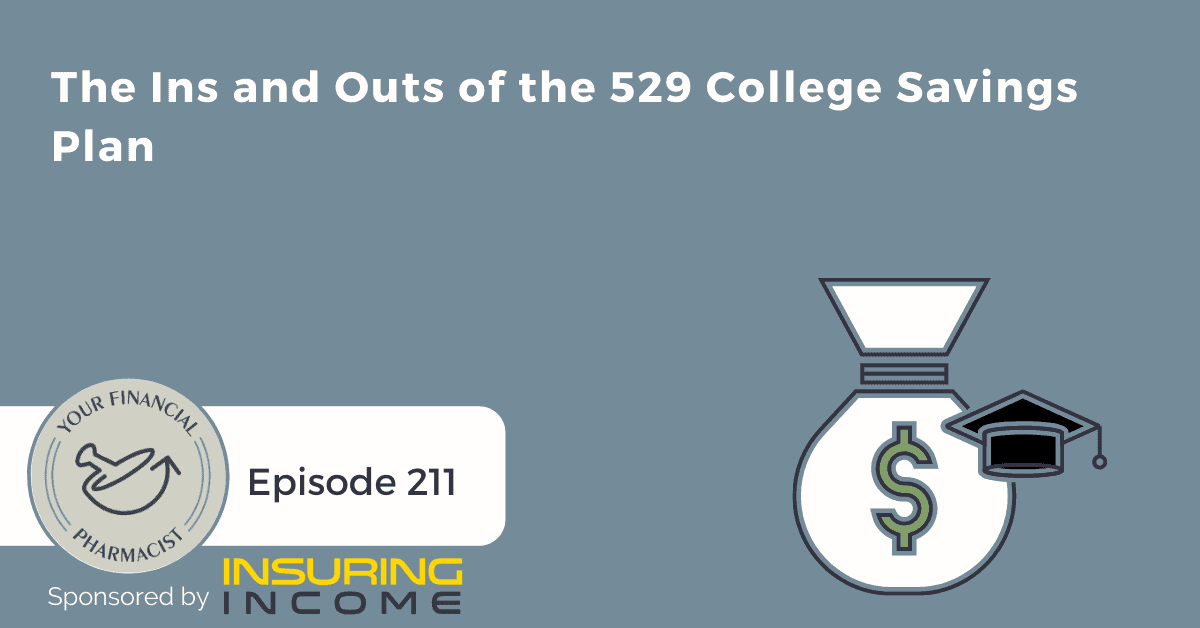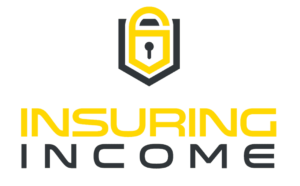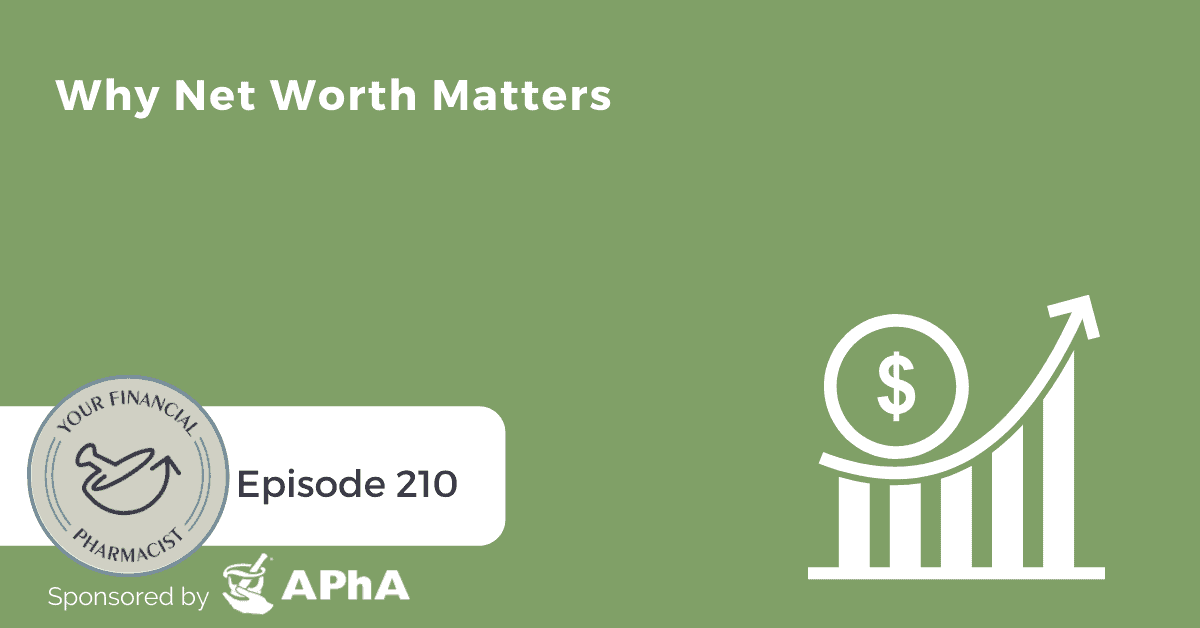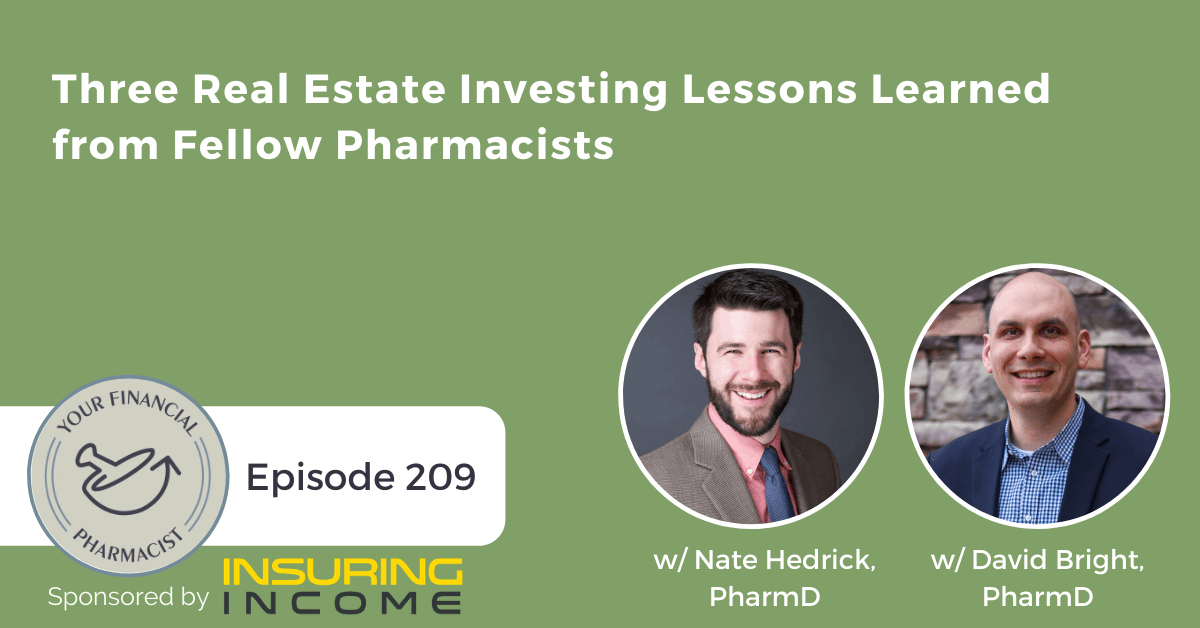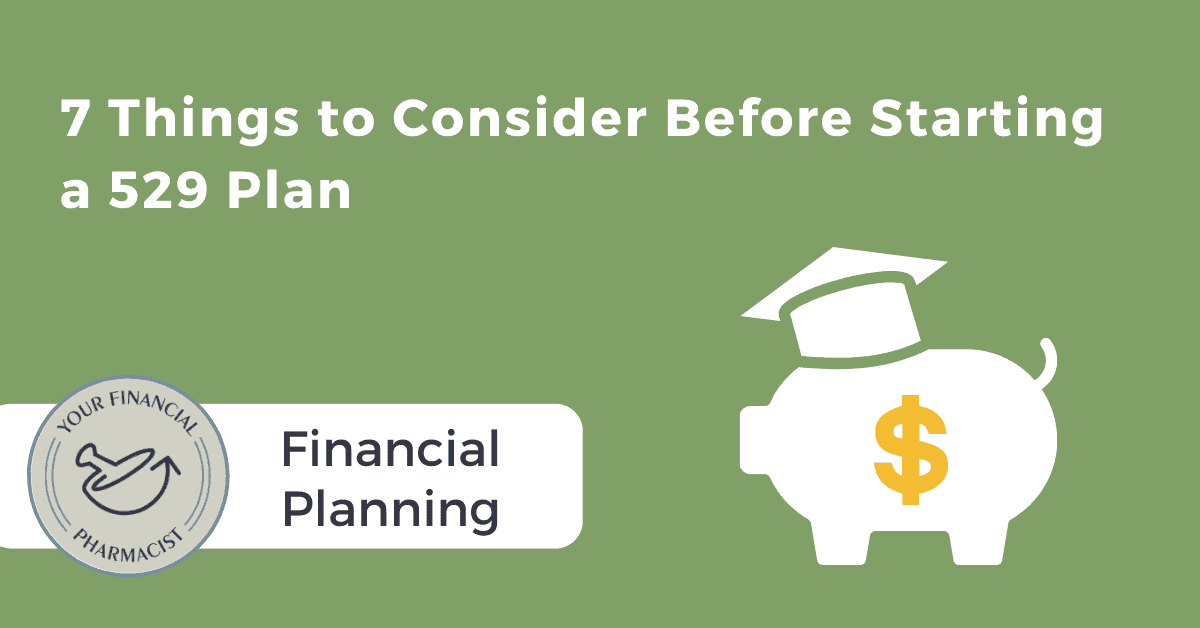How Kelley Used Her Clinical Expertise to Build a Business
On this episode, sponsored by GoodRx, Kelley Carlstrom shares how she has leveraged her clinical expertise to make oncology specialty training more accessible.
About Today’s Guest
Kelley D. Carlstrom received her Doctor of Pharmacy from The University of Colorado and completed post-graduate residency training at Beth Israel Deaconess Medical Center and Dana-Farber Cancer Institute in Boston, MA. She is a board-certified oncology pharmacist that has worked in a variety of traditional and non-traditional settings including at a large academic medical center where she specialized in blood and marrow transplantation, at a small community hospital, as a consultant for a large electronic medical record implementation, and most recently at a healthcare technology startup company committed to building software products for oncology clinicians. Kelley is passionate about oncology and sees a growing need for more pharmacists to be trained in this specialty. She has launched KelleyCPharmD, LLC which offers unique oncology training opportunities because she believes every pharmacist deserves access to specialty training that can transform their career.
Summary
Kelley Carlstrom, a board-certified oncology pharmacist, joins Tim Ulbrich on this episode to discuss her side hustle, which arguably is more of a full-time business. She talks about her career journey as a clinical oncology specialist, what motivated her to develop oncology training opportunities through KelleyCPharmD, and how her business has accelerated her financial plan.
Through her career experiences, Kelley learned there are gaps in oncology specialty training availability and a lack of support for pharmacists managing complex cancer treatments without additional resources. This shortage of resources and training, partnered with a need for oncology-trained pharmacists across the country, created an opportunity to build technology and education to fill that gap. Kelley saw this problem and began working on a solution, and KelleyCPharmD was born.
Without a background in business or being a prior business owner, Kelley had to learn how to take on various tasks outside of her comfort zone, including building her website. Initially, she explains, she wanted to make low-risk financial decisions about the business while testing its necessity and benefit to the pharmacy community. For Kelley, this hustle is not just a temporary solution. She is in it for the long haul. Kelley has built a business that she enjoys, sharing that experience with other pharmacists who she employs. She sees KelleyCPharmD and the flexibility that it will bring to her life as an integral part of her long-term financial plan.
Mentioned on the Show
- GoodRx: Get the Exclusive Report on the Current State of the Pharmacy Profession
- KelleyCPharmD
- Enjoy Learning Oncology (ELO) Courses
- Medipreneurs Summit
- Start: Punch Fear in the Face, Escape Average, and Do Work That Matters by John Acuff
- Connect with Kelley Carlstrom on LinkedIn
Episode Transcript
Tim Ulbrich: Kelley, thank you for coming on the show.
Kelley Carlstrom: Thanks so much for having me.
Tim Ulbrich: Really excited to dig into your pharmacy journey as well as your business, Kelley C, PharmD, LLC and your upcoming launch of a really incredible course. And I was sharing with you before we hit record, our paths crossed several years ago when you were up at Northeast Ohio and I was up at Northeast Ohio. And as we will share throughout this episode, your career has really taken some interesting turns and I love the mission and the work that you’re doing as a trained oncology pharmacist to really help impact and provide those services to other pharmacists and ultimately to have a positive impact on patient care. So excited for this interview and getting it out to our community. I think they’re going to find it really inspirational. So we have, as those that are listening know, we have featured several pharmacy entrepreneurs on this show as they have shared their business stories, their side hustle stories, and to be clear, the work that we’re going to talk about today that Kelley is doing at Kelley C, PharmD, is more than what I think of when I hear “side hustle.” This really feels more like a main hustle. But our goal nonetheless is the same, and that is to share inspiring stories of pharmacists such as Kelley that have really taken their clinical experience and training and because of their passion, developed an incredible business and offering that is helping other pharmacists while helping also accelerate their personal financial goals. So Kelley, start us off by telling us about how you got into pharmacy, where you went to school, and your training and some of the first work that you did after school and in residency.
Kelley Carlstrom: Sure. So I went to pharmacy school, I worked as a technician, actually, for a long time before pharmacy school. So I’ve been in pharmacy for awhile. But I graduated pharmacy school in 2010 from the University of Colorado. And I moved to Boston for postgraduate residency training. So I did my first year at Beth Israel Deaconess and my second year literally a stone’s throw across the street at Dana-Farber Cancer Institute. After I did residency, I moved to Cleveland, of which I had never been before. I’d spent about 24 hours in an interview there and moved for a really incredible job. And my — I was tasked with starting a new pharmacy-led ambulatory service in the bone marrow transplant department. They had really a not — they had very few pharmacists that touched patients in the ambulatory setting. But they were having some issues in bone marrow transplant when the patients were admitted. They were on interacting drugs, their med rec was terrible. So they really wanted to try to capture those patients up front. And I loved it. I loved the ambulatory setting, I got to chat with patients all day long. And I did that for several years and ended up deciding to broaden my scope a little bit because bone marrow transplant, although I love it, is super niche. Rare treatment of rare cancers. So I ended up moving to a small community hospital within the same health system. So I went from working with 10 physicians in my niche in bone marrow transplant down to two physicians that covered all cancers. So really different environment, large academic center down to community center. And I learned a lot there. I learned that this is where the majority of cancer patients are treated in this country are these small community centers. Most of them don’t go to these large academic places. And I learned what it was like to be the only pharmacist in this type of setting. So I did everything. I did the clinical work, I did the order verification, the product verification, and I am so thankful still to this day I had a rockstar technician that kept me on task. So it was a great learning experience.
Tim Ulbrich: So Kelley, you talked about, you know, your time at school in Colorado, made the move cross-country to Boston, from Boston to northeast Ohio where you’re at a large academic medical center, regarded as one of the best healthcare institutions really in the world. And then you decide to make a pivot to a smaller community hospital within that same system. You know, I think the question that comes to mind is why make that pivot from the large academic medical center where we tend to think about the specialty experiences, the high intensity care types of cases, you know, that’s where we’re really going to get the most bang for our buck as a specialist and what we’ve been trained to do. Why make that move? And tell me more about when you say that you realized many patients are getting their care in the — more of the local, community setting, not necessarily going to those larger academic health centers, what did that really help you do in terms of form your thoughts around what support pharmacists do or do not get in those roles where they’re not at those large institutions?
Kelley Carlstrom: Well, I did realize that just a couple years out of residency, I had hit the top rung of my career ladder. And I was a little surprised about that. And I guess I shouldn’t have been when I kind of understood what the career trajectory was after residency. But I was, you know, doing all of the things that we do in clinical specialist roles. I was seeing patients, I was involved in the residency program, I was a director of the PGY2 program, I spoke at conferences, you know, I gave CEs, I did all the things, but I was at that top rung and wanted to expand and see what else was out there, how else I could develop my skills. So that’s what moved me to the community practice. And when I got there, I think what it showed to me, I was very — I felt very fortunate because I had — like I mentioned, I was the only pharmacist in the whole hospital, let alone the cancer center that had any oncology experience. So I felt fortunate that I could rely on my residency training, I could rely on my colleagues that I had connected with, that I had worked with over many years, and I could reach out for help. But as I interacted with other pharmacists at other smaller community centers like me, I realized not everybody has those resources. And I thought it would be pretty terrifying. I mean, I was busy throughout the day, there was a lot of questions I didn’t know, I don’t know why every 5FU pump shows up at 10 a.m. on a Tuesday, you know? It’s really busy, it’s a fast-paced type of environment. And I just, I was so fortunate that I had resources to tap. And I was just wondering, how do these other pharmacists manage this? Because like I said, there’s so many of these cancer centers. And yeah, I just wanted to determine how other pharmacists kind of make that successful.
Tim Ulbrich: And I think we’re going to come back in a little bit and dig into more of what I perceive to be the solution that you’ve developed to the problem that you observed in terms of pharmacists that are at these smaller institutions or even perhaps institutions that may not have access to those pharmacists and how can we be able to provide those services in a way that might seem a little bit more nontraditional. Kelley, it reminds me — you know, one of the thoughts I had often in my academic roles where it’s very common where there’s a shared faculty member that spending time at the college and time at the practice site and often, the funding of those positions may be split between those institutions, and those practice sites tend to be very robust, they tend to be very innovative, they’re training students. But I always left feeling a little bit unsettled of like, how does this scale? Or how does this translate when we think about the pharmacist impact nationally and ultimately, what a pharmacist can do to improve patient care? And I think those types of pilot sites, I guess you could call them, are great. Or if I think about here, what we’re discussing in terms of sites that have access to really robust, advanced residency training programs and clinical specialists, that’s great. But that’s a really small percentage overall of the institutions that are out there across the country. And so I think the vision that you have here — and we’ll talk more about some of the services that you’re deploying to help solve this problem, is really an interesting one. And when I first learned more about that, it was kind of a lightbulb moment for me of wow, like this is a really incredible opportunity for here, we’re talking about oncology practice, but I could see how this could also translate beyond oncology practice of how do we be able to really extend the expertise of a pharmacist outside of what we might think are the institutions that are able to offer these services or have the resources to do so. Now, before we get into that and talking more about what you’ve developed with Kelley C, PharmD, and to really help solve this problem, bring us up to speed with your current positions and the transition you made after that experience at the small community hospital and the work that you’ve been doing since then.
Kelley Carlstrom: I was pretty happy in my small community role, and I had a recruiter reach out to me through LinkedIn, which is one reason I’m so passionate about advocating for pharmacists to be on LinkedIn because this is where a lot of job opportunities come from. So I got recruited into a consulting role where I helped a large center get off of their paper chemotherapy orders and into their EMR, which there still are cancer centers and other centers that are on paper orders. And what surprised me is that I found this love for oncology and technology that I didn’t realize I had. You know, it’s not the typical path of a clinical specialist to end up on the tech side or the informatics side of things. But what I realized is that we have a lot of bad tech in healthcare. And the reason why we do is because there’s not enough clinicians helping inform those products. So I did that for awhile, almost three years. And when that contract ended, I was looking to stay in the technology space. So I ended up at a healthcare technology startup. So an interesting role for a pharmacist, and it’s really great because we’re making software products for oncology physicians and patients. And I get to bring my clinical practice experience to help inform those products.
Tim Ulbrich: And that led you out to San Francisco, correct?
Kelley Carlstrom: It did.
Tim Ulbrich: Yeah. So adding to the list, as we talked about, you know, Colorado to Boston to Cleveland and so forth. So really cool. So on top of that role and that position that you’re working in in that startup where you’re able to really blend your passion and love for oncology with some more of the informatics technology side, I want to shift gears and talk about the business that you have developed because I think it’s a really interesting example and one that I’m excited to share with our community about how you’ve been able to leverage your clinical expertise and ultimately monetize that expertise while being able to provide value and a service to other pharmacists and ultimately, the patients they serve. So Kelley C, PharmD, LLC, tell us about when it started, how it started, and ultimately what was some of the why behind getting this effort off the ground?
Kelley Carlstrom: Well technically, it started two years ago. That’s when I made my LLC. But I had some ideas floating around in my head before that from what we spoke about when I was at the community cancer center and really just trying to understand who were the pharmacists that work in these settings and what kind of support do they need? And in addition to my experience there, I had a lot of pharmacists reaching out to me on LinkedIn, getting messages every day about ‘Hey, I’m new to oncology,’ or, ‘Hey, I’m covering for a maternity leave and I’ve been thrown in here and I don’t know what I’m doing.’ You know, ‘Where can I learn the basics of oncology?’ And so I sought out — I started to research like, OK, what hyperlinks can I give these people, what are articles can they read, and there was nothing cohesive out there. You know, I had to send people to a slew of different websites. And it’s just — there’s nothing that was at the baseline level of what these pharmacists needed. So that’s when I got an initial idea, but what really sparked it was I went to the MediPreneur conference, which is a conference for pharmacist entrepreneurs or other medical professional entrepreneurs. And it was great to be in a room with a lot of like-minded people that had big ideas and really just started chatting through what could this actually look like? What does being a business owner look like? Because of course, in pharmacy, we don’t get a lot of exposure to that. I think my school had a business elective that I didn’t take because I didn’t think I needed it. So you know, I don’t know anything about business. So that’s really when the process started. And from there, I just took a lot of really small steps of reaching out to pharmacists and saying, “Hey, what kind of information do you need?” and kind of gleaning more information. And it’s been growing since then.
Tim Ulbrich: Yeah, and as I mentioned on the call before we hit record, this really feels disruptive to me in a good way. And I think one of the things you shared is that there’s this idea in the profession that you can only work in oncology if you’re residency-trained, perhaps two years of training, board certification, and so forth. And that’s just not true in terms of the number of people that are out there that are working in oncology practice without training that might not be getting support. And that could be situations like you mentioned of, hey, somebody’s on leave and I’ve been thrown into this role and I want to make sure I’m doing my job well as a pharmacist and so how do I get up to speed? Or it could be maybe somebody who has been in a staff pharmacist role or maybe a general pharmacist role and they have this interest in oncology that’s flourishing. And maybe they’re out five, seven, 10 years and the idea of going back and doing some additional residency doesn’t necessarily make a whole lot of sense. And so how do we make this more accessible and to get the support that they need? And one of the things I love, Kelley, from your website is that you say, “My goal is to bring hope and optimism back to the pharmacy profession because everyone deserves access to specialty training that can transform their career.” And that mission, I know our listeners know that I talk often about any good business is ultimately finding a solution to a problem that is out there and is one that people care about. And I think you really have, you know, nailed this with a strong why and motivation behind what you’re trying to do. So kudos on the vision and for taking some of that risk to get this off the ground, even if that means not necessarily following what would be a traditional path as we think about pharmacists in these roles.
Kelley Carlstrom: Yeah, let me throw a couple numbers at you, Tim, that kind of explain this. So yeah, I completely agree with what you said about not everybody can do residency training. And we can’t restrict people working in oncology just to those that are residency-trained. And the reason for that is we don’t have enough pharmacists. So there are 71 NCI-designated cancer centers, so National Cancer Institute. And these are, they’re only in 36 states, so there’s not even one NCI center in every state. And these are the big, urban centers where residents are trained and where clinical specialists typically work. So 71. But there are more than 1,500 cancer centers in the country accredited by the Commission on Cancer. And that — they all dispense chemotherapy. There’s probably other centers, infusion centers, that dispense chemotherapy, that aren’t accredited. So we need more pharmacists to work in all of these various settings. And there are constantly oncology jobs posted. I talk with recruiters that can’t fill oncology jobs. So I know you’ve talked previously on episodes about where the profession is going and the shrinking job market, but oncology is not experiencing that. We have a lot of opportunity.
Tim Ulbrich: Yeah, and I’m glad you said that, Kelley, because I think this is a great example where we often talk about the job market and trends from a global standpoint. And we really need to get down in the weeds a little bit in that there are certainly sectors of the profession, you’re talking about one here, where there’s arguably considerable opportunity for growth. And I think that’s one of the challenges when we look at general trends, Bureau of Labor Statistics, indices, etc., we’re looking at the whole pie. And really, it can be different stories if we look at different parts of the profession. And as I put on my employer hat for a moment, Kelley, like if I’m a director of pharmacy or a Chief Pharmacy Officer, and I have this open position in oncology that I can’t fill, you know, I could sit around and perhaps wait for the right time and the right person that has clinical specialist training, residency training, board certification, etc., or I might have someone in my department who has been a high performer, is a known entity, has an interest in oncology, and if there was more readily available access to resources and training, I could develop that person internally and be able to promote them up into that role. And that’s where when I say I think you’re onto something disruptive, I think that’s a great example where, you know, there’s an opportunity through more readily available training and resources to be able to train up folks within a workforce or to be able to make these positions more readily available.
Kelley Carlstrom: Exactly.
Tim Ulbrich: So talk to us more about the products and services. We’ve talked about the problem, right, that we’ve identified. You’ve talked a little bit about the why there’s a need for this. So what does the solution look like? When we talk about readily accessible resources and training, talk to us a little bit more about the products and services that you currently offer, the focus of what you do on your website, and more specifically, about the Enjoy Learning Oncology program, the ELO program for short, which is a new course that you’re going to be launching soon.
Kelley Carlstrom: So I see three main paths to learning oncology. There’s the do-it-yourself, the DIY path, where you can learn oncology on your own. All the information you need is free on the internet. But that’s the problem, right? The internet is a vast place, and you can fall down into a lot of rabbit holes, and it’s not really — it takes a lot of time investment up front to kind of do your own curation of the information. The second piece is the curated content, so what’s already been packaged out there? You know, some of the CE programs I’d put in this bucket. You’re kind of given some information. You still have to do it on your own, but it’s kind of already been collated for you. And then the third piece is the facilitated training path, which is what I’m going down. And I like to think of this as an Orange Theory analogy.
Tim Ulbrich: Yes. Yes, give us an Orange Theory analogy. Yes.
Kelley Carlstrom: So I love Orange Theory. I went a lot pre-pandemic. And what I love about it is you just show up. You don’t have to bring water, you don’t have to bring a towel, you just get dressed and you walk in the door. And they tell you what to do. “Go get on this treadmill, run at this pace, do this on the rower.” And you still have to show up and do the work, you have to burn the calories, put in the effort. But you don’t have to spend time and effort thinking, you know, what’s my workout program going to be today or tracking in your app how many reps I did. And I’ve modeled my program off of that because you also have access to those experts in the class. You can say, “Hey, is my form good?” or ask a question about the rowing machine or how fast should I be going, what’s my speed? So my program, my ELO program, has three main components. And the component that I’m most passionate about is what I call the ELO collaborative. So what this includes is a basics training program, so foundation of things like how to verify a chemotherapy order. It includes my blueprint online course, which is a really robust program that has 20+ weekly modules. And it goes through all the major diseases and a couple non-clinical topics. But what the collaborative does is it houses all of those in a bubble of access to experts. This is the biggest challenge I see and what I’ve heard from pharmacists is I can read all this material, but I have questions, I don’t understand how these things link together, I don’t know if this actually happens in real life. Just because it’s in the guidelines doesn’t mean it happens in practice. And so we need resources to be able to help direct people when they have questions. So how I do that is I hire other expert oncology pharmacists to support clients in my program. And that is through — you can ask questions weekly as you go through the content in my Slack channel. And then we have live office hours virtually where you can pick the brain of an oncology pharmacist.
Tim Ulbrich: That’s awesome. That’s really cool. And that feels like, Kelley, to me as you talked through the three types of training pathways, the DIY, more of a traditional CE type approach, and then obviously what you’re doing here, those things where you’ve got more of the support, the community aspect, the live office hours, and so forth, access to various experts, more up-to-date, relevant information, that really feels like the differentiator from that more of a traditional model. Is that accurate?
Kelley Carlstrom: Yes.
Tim Ulbrich: OK.
Kelley Carlstrom: I think that’s the big piece that people have told me. They have questions and they have nowhere to go to ask them.
Tim Ulbrich: You know, I love your Orange Theory analysis here. And I want to take it a step further because I participated in Orange Theory for awhile pre-pandemic, and for all the reasons that you mentioned, I thought it was incredibly impactful. A couple other things that I think resonate here as well as we’re talking about the ELO program and what you’ve developed and would be of interest to other pharmacists that might think about developing something on their own, if you want the Orange Theory type of model, you book an appointment, you’re accountable, and if you don’t show up, even though you’re paying a monthly fee, if you don’t show up, you’re going to get charged, right? And you know, one of the things I love about folks that are monetizing their clinical expertise is that for the user, for the person that’s purchasing, there is value and power in someone having skin in the game. You know, maybe you offer something for free and you get more folks involved. I can tell you from our experiences at YFP and a lot of what we’ve done, I heard from other pharmacy entrepreneurs, is that there is value in folks that make an investment to pay for something that they then perceive there is a personal return on that investment and therefore, there’s a commitment of time and energy to be able to participate in that. So I would encourage folks that are thinking about monetizing clinical expertise and services, No. 1, don’t be scared to charge for your expertise and your time, and No. 2, make sure you’re not underestimating what your service is worth. Because I think we tend to maybe have that approach for some pharmacists that are out there. The other thing I would say to that is, you know, I remember going to some of those workouts and like, you’re right, I mean, you don’t have to have all the equipment, you show up, the workout is ready for you, but you better walk in the door with a mindset of being ready to personally grow or else your butt is going to get kicked, right, for that day. And I think that’s true here. Like when you’re going to invest a lot of time and some money in a course that you’re making a commitment to develop individually and professionally, like you’ve got to be ready. You’ve got to be ready to engage. And I think the accountability you have with other learners and the accountability you have with live office hours and things like that really helps to facilitate that as well. But I think the mindset going in to a program like this is really important to be able to get everything out of it that you want to.
Kelley Carlstrom: I completely agree. Accountability is really difficult with a long program. Oncology is hard. Like it’s — we have a steep learning curve. But our profession is a profession of self-learners. So if anyone can learn oncology, it’s any pharmacist. And you just need to show up and put in the time because at the end of the day, nobody can make you learn or develop new skills. It’s really on you.
Tim Ulbrich: That’s right.
Kelley Carlstrom: And you know, my program is about eight months long. So this is not a short, do it one time course and learn all about oncology. I need you to stay committed.
Tim Ulbrich: So at the time of this episode launching, your course is maybe live or about to be live here really soon, so where can folks go to learn more about not only Kelley C, PharmD, but also more specifically about this course, the ELO program.
Kelley Carlstrom: Yeah, you can visit my website at kelleycpharmd.com. And that’s Kelley with an -ey here.
Tim Ulbrich: Awesome, awesome. Let’s transition, Kelley. One of the questions I like to ask folks that are especially working full-time, they’ve started their own business whether we want to call it a side hustle — I would argue this is not. You know, it seems more than that, as I mentioned at the beginning — but whatever we want to call it, at the end of the day, you know, I think some of this is about really having a strong vision for what you want to do, the impact that you want to have, and obviously I can tell this is fulfilling work to you. But I think part of this is also about like you have financial goals, you have a financial plan, and you want to be able to accelerate some of those as well. So how has this business accelerated and impacted your financial plan?
Kelley Carlstrom: So this is — I’m in it for the long game here. So it has not had an impact on my financial plan in the short term. But what — my focus when I initially started this was, you know, not being a business owner not having any experience with business before. I wanted to kind of tiptoe my way in and do a lot of bootstrapping initially. So for example, I built my own website. Not a skill pharmacists typically have. And I definitely wasn’t great at it. But I didn’t want to make huge investments up front until I kind of got some feedback and determined if I was on the right path. So over the past two years, I’ve been getting that incremental information and investing more and more in my business. So what I — definitely what I am interested in is having this be an integral part of my plan, my financial plan, and what that gives me is flexibility. And at the end of the day, flexibility in my view is the end-all, be-all that gives you opportunity to go whatever path you want to go. If you want to take a different job, if you want to take a different job that maybe pays less, like you don’t have that pressure of needing a full-time income or benefits from a particular job. It gives you a lot more options.
Tim Ulbrich: Absolutely. We’ve talked about the power of flexibility on this show so many times as I think that others share your belief on the value and the power that that has. Kelley, let me ask you, you mentioned — paraphrasing here — that you know, you weren’t a business owner, you didn’t see yourself necessarily as a business owner and entrepreneur. You’re a clinically-trained specialist. And so here you’ve got this really cool idea, you think that you have a solution to a problem. But I always say, there’s a big chasm between like idea and actually having something that’s out there, right? And I think this chasm is where a lot of people get overwhelmed, get lost, or perhaps give up? And Seth Godin, one of my favorite authors, talks about this as the concept of being the dip. You know, when we’ve got a really cool idea, whether it’s a project at work, whether it’s a business idea, whatever, we get really excited about it. And then we quickly find ourselves in this dip of like, oh crap, like what do I do next? And what is this really going to take? And like am I ready to kind of go through this? And what he argues in that book of which I agree with is oftentimes, we never get on the other side of the chasm or the other side of the dip because we get lost in that period. So for you, you know, you mentioned building your own website and that’s awesome. I noticed that when I was looking at the site the other day. Like as someone who doesn’t necessarily view themselves as an entrepreneur or a business person — although I would challenge you a little bit on that — what were some of the big barriers to bridging that gap between idea and actually having something to go?
Kelley Carlstrom: The biggest barrier I think is your understanding or my understanding of what you’re capable of because I think, like you said, you look into this chasm of I don’t know a lot of this information, and it can easily get in your way. So for example, initially, I was sending out an email newsletter with some interesting jobs I found that didn’t require residency. And I was manually sending these emails, Tim. I didn’t realize what an email provider was. And so I really started at the baseline of understanding all of these skills. But one thing that in my traditional or in my career path that really helped me, when I got into my consulting role, I moved from being a full-time employee to being a consultant contractor, which is a much riskier position, you can be let go at any time. And what I learned from that was I was much more project-based. So I had to show up and understand what value I was bringing and what I was delivering at the end of this project. And that’s a different mindset than when you’re an employee.
Tim Ulbrich: That’s right.
Kelley Carlstrom: So that really shifted me to think OK, I see a problem, these pharmacists reaching out to me and telling me they have a problem — shouting at me, actually. When I finally recognized OK, somebody’s giving me an opportunity here, there’s a problem, then I start thinking about how can I fix this? What’s the deliverable at the end of it? And I just started walking down that path of asking questions, the resources at the MediPreneur Summit kind of got me kicked off. They gave me a couple other references, and I just started learning on my own. I invested in some coaching and some other programs that really kind of taught me a lot of the nuances. But it’s a journey for sure. Like there is not a destination here. I am learning something every single day. There’s lots of great new technology out there to help us, depending on what you’re offering. So I’ve really enjoyed flexing those skills that I didn’t get to flex before.
Tim Ulbrich: And I think if folks that are listening that have an idea, you know, really let sink in what you said about it is a journey. I don’t view this as there’s an end point per se because there’s always the learning that’s happening of new tools, new resources, how can this be improved. But one thing you said that really resonates with me, and I’ve shared on the show before, you said, I just started, right? And there are several ways that you just started, whether it was eventually you built that website, you mentioned engaging in coaching, you attended the summit, MediPreneur Summit, which sounds like had a big impact on kind of accelerating the idea forward. And one of my favorite books I’ve referenced on the show before is “Start” by John Acoff. And that was really instrumental for me as well of OK, how do I get over some of these internal objections and fears and all these questions, and what’s one thing I can do to get started, even though you know, like you will look back, Kelley, I know you will, in five years — and even though I think you’ve done an awesome job building your site and what you have — you’ll look back and say, “Wow. This has come a long way.” Right? “It’s grown, and I can’t believe that I did this or that,” or “I can’t believe I didn’t use an email provider.” And that’s OK. Like not letting those things paralyze you but really just trying to move forward because at the end of the day, you’ve got a good vision, and you’ve got a problem that needs to be solved, and I think you’ve certainly got a solution to that. What about time? You know, I sense that many people listening are thinking, Kelley, like where and how are you finding time to build a website, you’re working a full-time position, I’m sure in a startup environment, that doesn’t mean you’re not working a decent amount of hours. So how are you balancing this with your pharmacy job? How many hours are you spending of the week in the business? Tell us a little bit more about that.
Kelley Carlstrom: Yeah, time balancing is definitely tricky. So this is my night — every night and every weekend is pretty much what I work on this. I think the — when I was first developing kind of what program I would want to create or what product I wanted to create, I had some great advice about not making a product you don’t — or not building a business that you don’t want to work in. And it sounds kind of intuitive, but when you’re initially thinking of what is the problem and what’s the solution, it can easily fall in the trap of making something that fits the solution but doesn’t fit your particular lifestyle or goals. And so when I was initially making my bigger, robust program with these 20+ modules, I was thinking, OK, I can make all this — I can do this all myself. I have this knowledge. But then I had the epiphany one day where I was thinking, why would I do this all on my own? Like I have a full-time job. I don’t need to do this on my own. So that’s when I got into the track of my business where I hire other pharmacists because what I’m realizing now is that there’s kind of a mass exodus in oncology pharmacy. A lot of experienced clinicians are leaving patient care and going into nontraditional roles, particularly pharma. And I think one reason — it’s multifaceted, but I think burnout is definitely one part of it — but one reason is that there’s not a lot of other opportunities within their role to monetize their knowledge or kind of move above that career ladder. And you can be on an advisory board or speaker panel for pharma and make a little extra money, but not — those have conflicts of interest so not everybody can do that. You can give a presentation at a conference that they usually pay you for, but then you have to slave over a slide deck. And at the end of the day, your hourly wage is pretty meager. So you know, not only am I helping pharmacists learn this material, but I wanted to bring in these expert pharmacists and pay them for their knowledge to help support me so I don’t have to do everything myself. Staff your liabilities is one of my most important phrases lately. Hire out help.
Tim Ulbrich: Absolutely. And I think those hires, Kelley, like it sounds like for you — I know we’ve noticed the same thing — like in the moment, they feel really weighty, right? Not only from a financial standpoint but also you’re giving up some of that control of whatever piece or part but so instrumental to getting comfortable with that and really, at the end of the day, again, you’ve got a great vision and a big vision, and at the end of the day, like Kelley can only do so much to accomplish this vision, right? And so how does the business not necessarily become just Kelley but it’s about this accessibility of oncology specialist training to as many pharmacists that need it and that can get it out there and that you might be the limiting step to that to be able to accomplish that. And so how do you be able to build the business in a way that supports other people helping? I said this before we hit record, I mean it genuinely, so I’m going to say it again: I was really excited about this interview. You’ve delivered on inspiring me, and I sense that’s going to be true for many of our listeners as well that may have some ideas that are floating out there and maybe have not taken action on some of those and are ready to move those forward. Where can folks go or what is the best place for folks to go to connect with you and to learn more about the work that you’re doing?
Kelley Carlstrom: So you can learn more on my website, KelleyCPharmD.com. But I would love if you would connect with me on LinkedIn. LinkedIn is my favorite place to hang out, and I think most pharmacists do not maximize LinkedIn to the fullest potential. And there’s a lot of opportunity on there. So definitely reach out and send me a message.
Tim Ulbrich: Great stuff, Kelley. And again, that’s KelleyCPharmD.com. That’s Kelley with -ey, and you can connect with her on LinkedIn. We will put her information into the show notes. If you have a story and you’re listening, you have a story that you think would make for a good episode on the podcast that either you’re monetizing your clinical expertise or have knowledge of someone else that is, please reach out to us and as always, do us a favor and leave us a rating and review on Apple Podcasts so more pharmacists can find this show as well. Thank you so much for joining, and hope to have you back here again next week. Take care.
Current Student Loan Refinance Offers
[wptb id="15454" not found ]Recent Posts
[pt_view id=”f651872qnv”]

